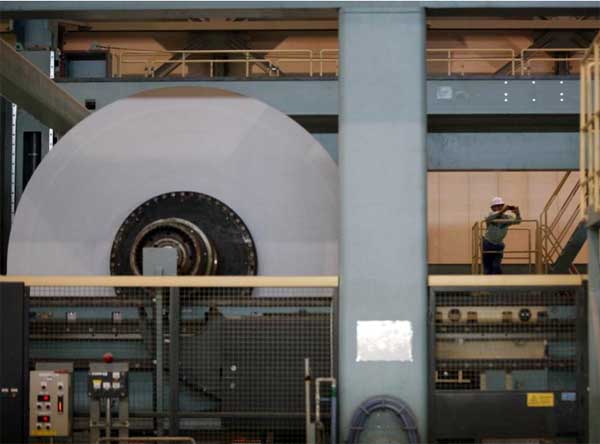Japan’s Paper Mills Seek Methods to Diversify, Expand Abroad
According to a report this week by The Japan Times, Tokyo, Japan, the nation’s paper manufacturers are branching out into sectors such as power generation and battery components as well as expanding operations elsewhere in Asia as demand for traditional paper-based products shrinks at home.
Demand for paper and paperboard in Japan peaked at 31.96 million metric tons in 2000 and has since been in a decline, slipping below 30 million metric tons in 2009 and totaling only 27.66 million metric tons in 2013, according to the Japan Paper Association. In particular, shipments of paper for newspapers and advertising leaflets have been falling.
Japan’s market for paper is contracting due largely to the nation’s aging population and dwindling birthrate as well as the widespread use of electronic devices such as smartphones.
Industry leader Oji Holdings Corp. is expanding production of corrugated board and paper containers in Southeast Asia and India. In November 2014, the company decided to build a new plant for corrugated board in Vietnam as its 22nd manufacturing base in Southeast Asia and South Asia. The decision was in line with Oji’s plan to focus more overseas, aiming to make 50% of its total annual sales in foreign markets by fiscal 2020.
Hokuetsu Kishu Paper Co., Japan’s biggest manufacturer of white paperboard, used for such products as candy boxes, launched production at a plant it built in China’s Guangdong Province in January.
In the household paper product market, the production of paper diapers is increasing because of its high profit margins. Daio Paper Corp. plans to build plants in China, Thailand, and Indonesia to produce paper diapers for children.
"As the use of paper diapers is still limited (in the three countries), we see room to win new customers," said Toshiki Yamagami, a Daio executive officer. The company also plans to develop products such as wet tissues that meet local needs in the countries.
Oji Holdings is also building a factory in Indonesia and Malaysia to manufacture paper diapers for babies.
In future development and planning, paper mills are creating new businesses that utilize their paper production know-how to fully adapt to 21st century demands.
Nippon Paper Industries Co. has built a biomass power generation facility within the compound of its plant in Yatsushiro, Kumamoto Prefecture, southwestern Japan, to generate electricity with timber from forest thinnings. It is set to start selling electricity this spring. The company is also producing young tea trees based on its afforestation technology and high-function cellulose nanofibers from pulp. Pictured below is part of Nippon Paper's Ishinomaki mill in Miyagi Prefecture, March 2012.
Mitsubishi Paper Mills Ltd. has crafted a novel development procedure in creating a material for lithium-ion batteries using nonwoven fabric produced for/alongside paper diaper medium, potentially streamlining and raising the efficiency in dual manufacturing processes.
And Hokuetsu Kishu Paper Co. has said that the glass fiber-based filters it produces for automobile batteries are in higher demand recently due to tougher environmental regulations in Europe and the U.S.
TAPPI
http://www.tappi.org/

